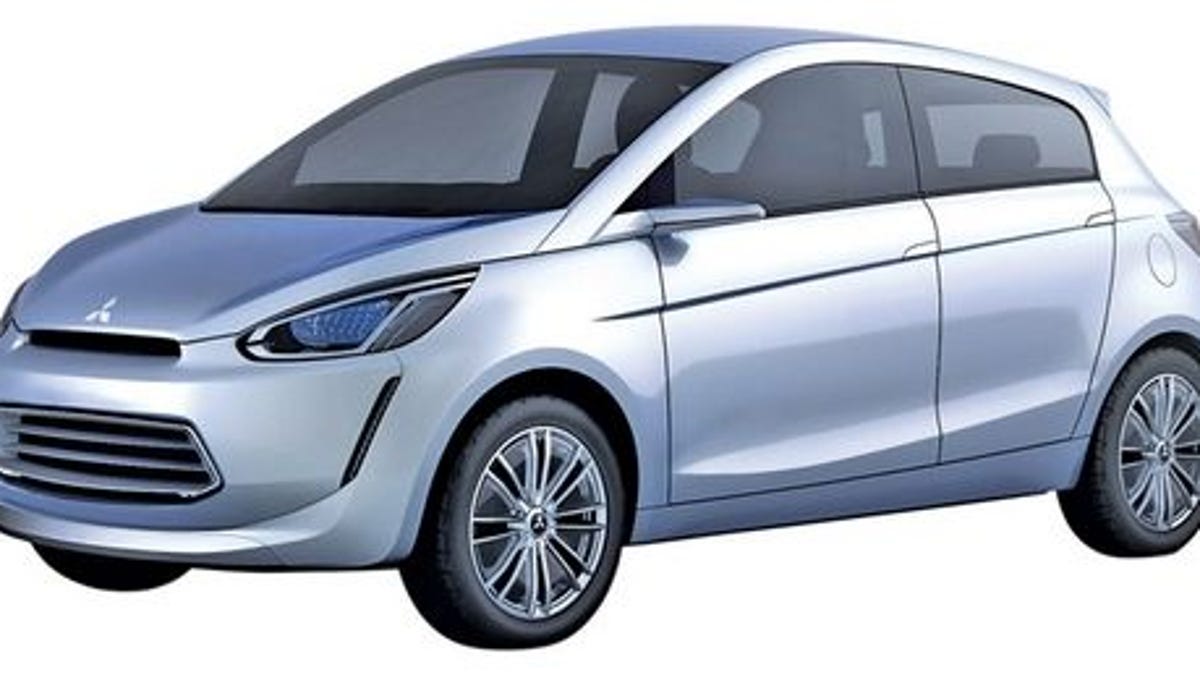Mitsubishi revamps U.S. strategy
Automotive News reports on Mitsubishi's model plans.

Mitsubishi plans a different U.S. model lineup and a new production strategy for its assembly plant in Normal, Illinois, as it shifts emphasis away from regionally focused vehicles to global small cars, hybrids, and electrics.
Shinichi Kurihara, CEO of Mitsubishi Motors North America, says the company will launch four new models in the United States within three years, as four slow-selling U.S.-built vehicles are phased out of production by 2014.
The i electric car--sold in other countries as the i-MiEV--will go on sale here this fall.
In 2013, a production version of Mitsubishi's new global small car will arrive in the United States. A concept version of the car will debut at the Geneva auto show in March.
A plug-in hybrid crossover and another hybrid vehicle are also planned within the next three years, Kurihara wrote in an e-mail to Automotive News.
"There will be additional new products that will be announced within the year that we feel will help our dealers appeal to a wider variety of customers," Kurihara said.
As part of a new global business plan announced last week, Mitsubishi plans to launch five plug-in hybrids and three electric vehicles for worldwide sale by the end of 2015.
Production of the Galant, Endeavor, Eclipse, and Eclipse Spyder will end in Normal by 2014. Those vehicles accounted for about 36 percent of Mitsubishi's 55,683 units sold in 2010.
The four vehicles will not be directly replaced. Instead, the plant will build either the Lancer sedan or Outlander and Outlander Sport crossovers or a combination of the vehicles, which share the same platform.
The Lancer is a compact sedan, while the Galant is a mid-size sedan. The Outlander and Endeavor mid-size crossovers are comparable in size, but the Outlander Sport is smaller, fitting in the growing compact cross-over segment.
The changes at Mitsubishi's sole U.S. assembly plant are part of a strategy to end production of regional models and instead manufacture vehicles that can be sold globally on fewer platforms.
"With the debut of this midterm plan, there are product plans, marketing plans, and brand strategy plans that can be shared in the coming months that we feel can certainly help the dealer cause," Kurihara said. "There is no desire or agenda to shrink operations in the U.S. market."
North America is by far Mitsubishi's smallest and weakest market. It was the only region to see sales shrink in the first half of the current fiscal year, which ended September 30, 2010. Sales in emerging markets such as China and Latin America, on the other hand, are booming
Streamlining
Ramsay Gillman, owner of Mitsubishi stores in Houston and San Antonio, is enthusiastic about the company's new strategy.
"I think streamlining the model lineup as Mitsubishi attempts to regain some market share and tries to get some momentum going is probably a good thing," Gillman said. "Pretty much anything that Mitsubishi adds to our lineup that's new and fresh will give some boost to the dealers."
The past decade has been a rough one for Mitsubishi dealers. Mitsubishi sold more than 100,000 vehicles as recently as 2007 but in 2010 sold just 55,683.
The dealer network has shrunk from 637 stores in 2002, when it set a U.S. sales record of 345,111 vehicles, to about 400 today.
Gillman said he doesn't expect that cutting the Galant, Endeavor, and Eclipse will cause the brand to lose more dealers.
"The past three to four years have been so difficult for Mitsubishi dealers that the ones that are still standing can probably stand another year or two," he said
Relieved
The best news is that Mitsubishi has a plan for its Illinois assembly plant, says Scott Grove, chairman of the Mitsubishi National Dealer Advisory Board.
The plan "should put the attention back on the ground-zero metrics that we need to be focused on so we can be competitive on the front lines," says Grove, who has two Mitsubishi dealerships near Chicago. "Dealers were relieved that there was a plan for the plant. Now, at least, that aspect of it is official."
The plant has operated well below its 200,000-unit production capacity. But by committing to build new product there, Grove says, a major issue of concern for dealers has been resolved: "Those of us who are comfortably surviving with what we have now won't be damaged, merely barely dented with the wind-down of what's at Normal now."
(Source: Automotive News)